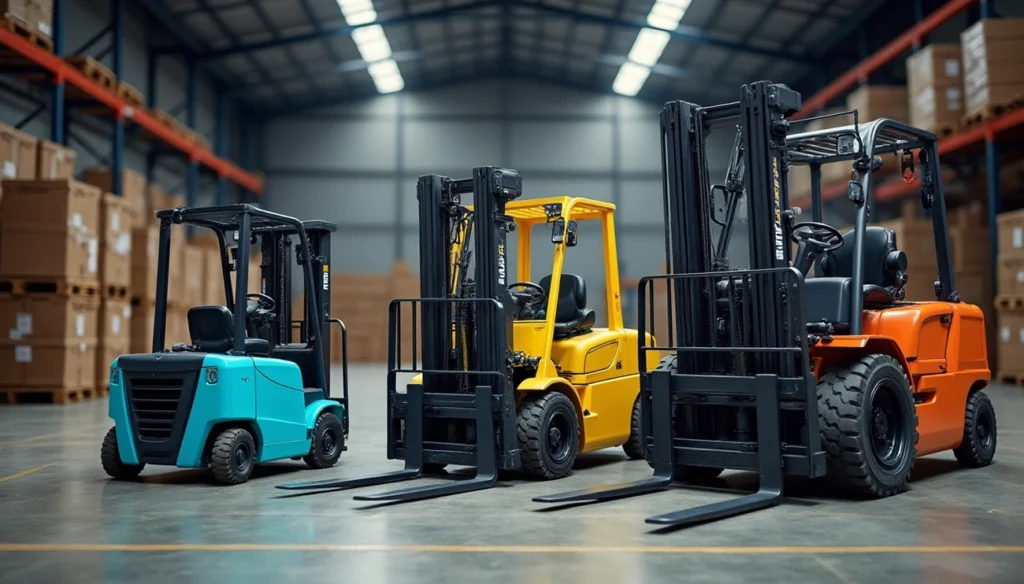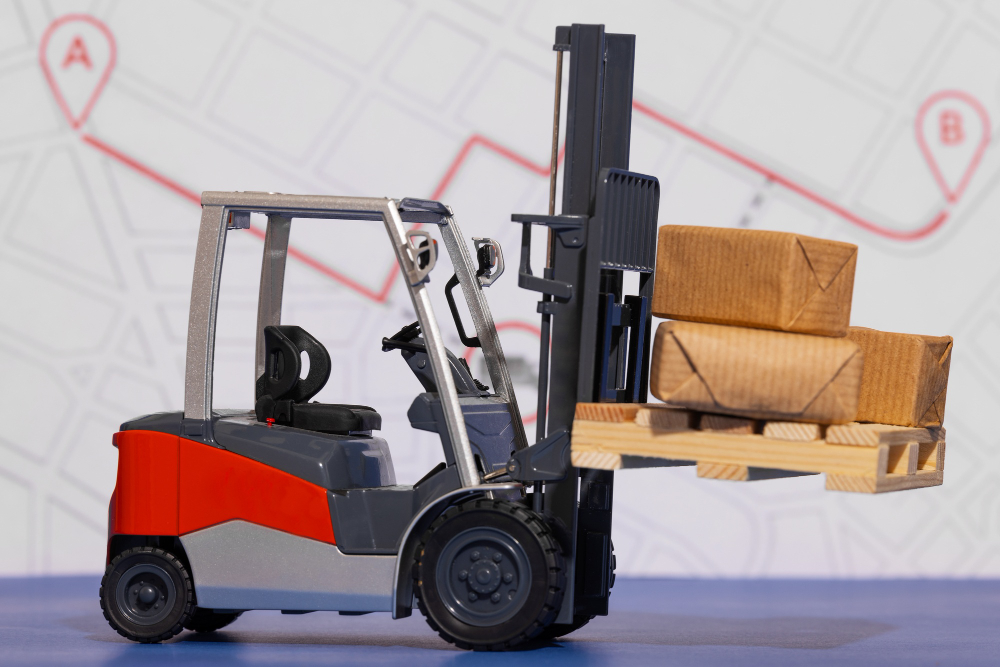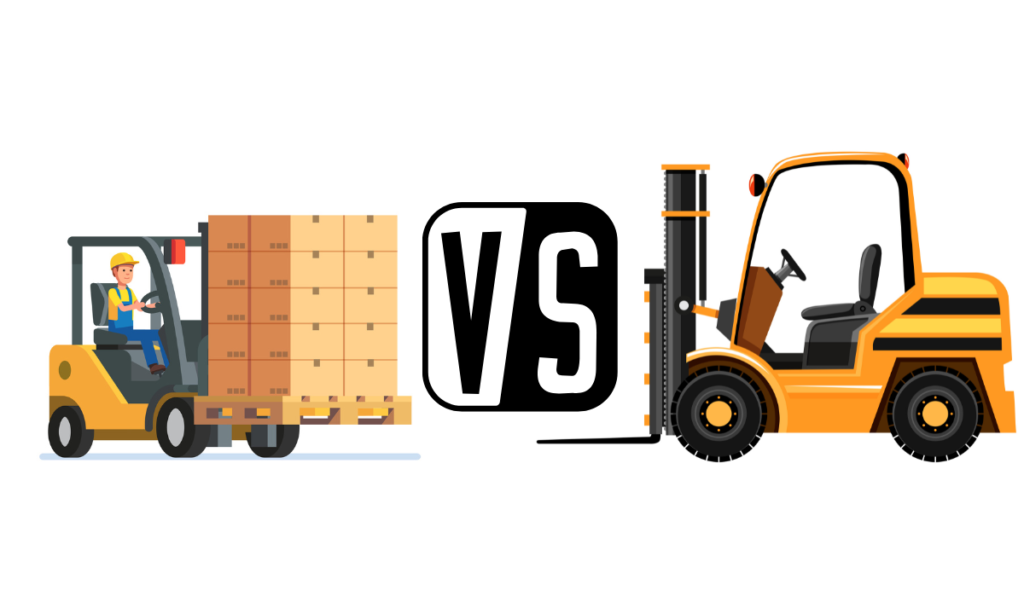How Much Do Forklifts Weigh? Expert Guide to Weight Classes (2,000-36,000+ lbs)
Are you curious about the weight of forklifts? It’s amazing to know that these warehouse machines have a weight that is as low as 2,000 pounds and as high as 36,000+ pounds—the latter translates to the weight of ten standard cars. The wide range in the weight of the forklifts directly affects things from the floor load capacity and transportation demands to safe and efficient operations.
It’s crucial to know forklift weight classifications in order to decide the proper type of equipment and to manage the facility well. In these and many other instances, such as equipment procurement, warehouse design, or safety regulation compliance, the actual weight of your material handling gear is non-negotiable. Moreover, different power sources, counterweight systems, and attachments can greatly modify a forklift’s overall weight.
The following article delves deep into the topic of forklift weight categories, elements that have an impact on the total weight, and some exemplars provided by the most prominent manufacturers in the field. ReReaders will learn how to determine the weight of their forklifts without needing specialized tools.
t It Means and Why It Matters
Knowing the connection between the forklift’s weight and lift capacity is the foremost idea of material handling. The relationship between these two factors directly influences workplace safety, operational efficiency, and facility management decisions.
Weight of service against lifting capacity
The service weight for a forklift means the actual weight of the machine itself with all the attachments but without any load. The term lifting capacity shows the maximum load that the forklift can carry safely. Most operators mistakenly believe that a forklift with a 5,000-pound capacity can lift any load of 5,000 lbs, regardless of the situation. This, however, can be a dangerous presumption to have.
To provide an idea, a regular standard warehouse forklift weighs about 9,000 lbs, which is 3 times the weight of a common car. This mass is of high importance as it creates the balance needed for a safe lifting operation. Actually, the majority of forklifts use counterweights, which can vary from 3,000 to 5,000 lbs., to maintain the balance of the heavyweight carried on the front tines.
A quick but practical formula may lead to the fact that the weight of a forklift is normally within 1.5 to 2 times its rated lifting capacity. By way of illustration, a forklift with a 4,000 lb lifting capacity weighs most probably between 6,000 and 8,000 lbs.
Humanized Rewrite:
In addition to their lifting capacity, heavy forklifts have the advantage of being more stable due to their higher counterbalance system capacity.
Lifting capacity is influenced by multiple factors, including
- Length and condition of the forks
- Height and inclination of the mast
- Size, shape, and weight distribution of the load
- The maximum attachments, such as side shifter or clamps [1]
How the weight of the forklift affects both the logistics of transport and safety
The sum total of a forklift’s gross weight refers to the combined weight of its frame, counterbalance, power source, and any attachments. This weight is a very significant and widely useful measure for the logistics of transportation, floor load analysis, and general safety operations.
At that point of time when a forklift had to be moved from one place to the other, this is the time when one must know the exact gross measurements of the weight. If the weight is underestimated, the transport equipment may be insufficient, leading to accidents during loading, transport, or unloading.
Weight dispersion in a forklift is a crucial factor that determines the vehicle’s stability. Unlike cars, forklifts have a different practice for the center of mass, which eliminates the possibility of tipping even when the truck is carrying heavy loads [4]. Nevertheless, there is one thing for lifting and another for carrying, and hence heavier forklifts are to be driven through larger clearances and require more floor support to sustain the increased weight, while on the other hand, lighter models are to be handled with care to avoid losing control over the uneven surfaces.
When it comes to safety, miscalculating the weight of a forklift can result in extreme situations such as tip-overs, load shifts, or even structural failures. Conversely, naturally heavy forklifts require longer halting distances and wider turning circles. Therefore, the operator must have a deep understanding of the vehicle’s weight and its influence on its control.
Weight becomes a factor of running expenses and building requirements aside from safety reasons. Family businesses, for example, the vehicles that are heavier also require heavier motors or batteries for them to
Facility managers should look into doorway clearances, elevator capacities, and floor reinforcement needs, which should all be based on the load weight of the forklifts to be used, in addition to the other factors listed earlier.
Forklift weight classes range from 2,000 to 36,000+ lbs
Weight ratings for forklifts proceed in an order that is not merely arbitrary; it is reliant on their serviceability, which is commensurable with their lifting power. These are the classes under which the equipment is placed, with each class originally being a lead-in to subsequent classes in such a manner as to be able to select the most suitable equipment with much ease.
Light-duty forklifts: 2,000-4,999 lbs
Light-duty Forklifts that weigh between 2,000 and 4,999 pounds are the most suitable for smaller warehouses and operations with limited space. Light-duty forklifts can be of either electric or LPG-powered. These versatile devices find their area of excellence in small spaces and are used for the basic transport of Forklifts are usually designed to carry significant loads, which has enabled them to find a place in various industrial sectors. For instance, a Toyota Core Electric Forklift (8FBC15U) weighs 4,930 pounds and can carry a capacity of 3,000 pounds. You may find that, although some of these electric forklifts are very light, they are still slightly less capable than an average adult man.
Narrow aisle trucks, i.e., Class II, are generally meant for warehouse settings where space is normally limited. A Class II forklift truck is normally on the order of 3,000-5,000 pounds of weight and 1,500-5,000 pounds of carrying capacity. One of the main things to consider with the narrow aisle forklifts is the need to restrict traffic in the immediate area of the storage space and the need for proper pedestrian aisles for egress.
Standard-duty forklifts: 5,000–9,999 lbs
Forklifts that belong to the standard-duty class are the ones most commonly found in warehousing operations, and their mass falls within the range of 5,000-9,999 pounds. The standard counterbalance forklift in this category mostly has a mass that is between 8,000 and 9,000 lbs. The forklifts in this class are largely used because they are highly mobile, and in addition, they are great lifting instruments.
Here are some models that exemplify this category of forklift perfectly:
- Toyota 8FGCU25: 8,000 pounds carrying capacity of 5,000 pounds
- CAT C5000: 8,100 pounds with a 5,000-pound capacity
Mid-range forklifts: 10,000-19,999 lbs Mid-range forklifts are the link between the standard warehouse units and the heavy industrial machines. Their weight ranges from 10,000 to 19,999 pounds to be able to carry well-defined loads in such manufacturing, construction, and distribution centers at ease.
According to this, certain models can even lift loads up to 125,000 pounds. On the one hand, it is obvious that the power source of a forklift affects its weight. Diesel forklifts are generally designed with more heavy-duty engine parts, have larger fuel tanks, and, consequently, are also heavier than their electric counterparts. The additional weight of diesel engines provides the essential feature of improved steadiness, which is especially valuable for outdoor work.
Compared to internal-combustion engine forklifts, electric forklifts are more lightweight, but strictly speaking, the battery system may have comparable or even heavier weight at some time.
Propane forklifts evenly distribute their weight between diesel and electric models, providing benefits from both sides. Weight distribution through the counterbalance system and its configuration One of the primary functions of the lift truck’s counterbalance system is to evenly distribute the total mass of the truck. Kg (attached to the truck’s rear end) are the main factors responsible for carrying the up-front weight.
The amount of weight that can be balanced by counterweights can range from as low as 1,000 to as high as 10,000 lbs., depending on the forklift’s size and load capacity. The counterweights typically consist of cast iron, steel, or concrete. To exemplify, a standard forklift of three tons usually needs a counterweight of around 1.8 tons.
This weight distribution, deployed strategically, guarantees the forklift’s stability even when performing heavy lifting. Battery weight in electric forklifts For an electric forklift, batteries are also significant for the overall vehicle weight. The power unit can change from 1,000 to 4,000 pounds based on the forklift model. The composition of a battery greatly influences the weight and size—the lead-acid battery usually weighs between 1500 to 2500 pounds, while the lithium-ion battery weighs 40-60% less.
This discrepancy in weight is noticed due to the fact that the mass of lithium is by nature lighter and the lithium-ion battery affords more energy. For instance, 3-ton lithium-ion batteries, which are 48V/600Ah, weigh around 350 kilograms compared to lead-acid ones that are more than 900 kg . Solid rubber cushion tires (rubber solidified on steel rings) and pneumatic tires (likewise found in cars) differ in terms of their weightlessness. In fact, pneumatic tires usually weigh more than cushion tires, but the mounting components for cushion tires are often the heaviest.
Attachments and accessories Attachments are major variables that directly influence a forklift’s operational weight. Common accessories typically featured in this area include sideshifters, carton clamps, rotators, and telescoping forks. These additions not only increase the total weight of the forklift but also decrease its lifting capacity, especially due to the weight of the attachment loads. To ensure safety, manufacturers require that capacity ratings be adjusted according to the installation of attachments.
Conclusion
Understanding the classification of forklift weights is a pivotal factor in effective warehouse management and equipment selection. The examples in this guide have shown us that there is a wide spectrum of choices in forklifts that range from 2,000-pound electric pallet trucks to 36,000-pound industrial machines. The weight of the forklifts affects the safety of operations, building requirements, and direct transportation.
The correlation between the weight of a forklift and its lifting capacity is perceivable and predictable. Almost all the machines usually are 1.5 to 2 times their labeled capacity. This parity is vital for stable counterbalance deployment as well as saving the truck from a dangerous rollover when making a pick-and-carry lift.
Various weight classes have their application scopes, e.g., light-duty trucks are suitable for indoor operations, the standardized ones are applicable for warehouse work, and the heavy-duty ones are for factory productions. The overall weight of a forklift is made up of many factors. The power sources are the primary factors that determine the forklift’s weight, as the diesel engine stack weighs significantly more than the electric engine.
The counterweight systems, battery packs, tire configurations, and attachments are additional factors that add up to the total operation weight. The weight can be determined correctly if the data plate status, estimation formulas, or direct weighing methods are used. The four main forklift manufacturing companies, namely Toyota, Yale, Hyster, and Crown, offer units of various weight ranges, ensuring that customers are guaranteed satisfying models.
Their product lines are broad to illustrate that the weight and the capacity grow proportionately as the operating conditions become more demanding. It is the responsibility of the forklift user to know the weight along with the lifting necessities so they can make the right choice of the lift truck.
That understanding not only could be a guarantee of saving workplace safety, eliminating damage in the workplace, and increasing operational efficiency, but it also helps in forklift selection for the one who buys it, ops, or manages it. Hence, sharing great concern about the weight specifications is essential for anyone involved in the forklift equipment purchase, operation, or management.



